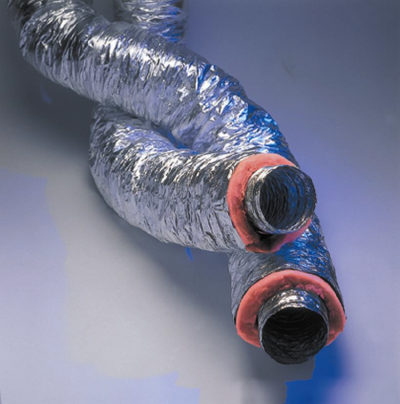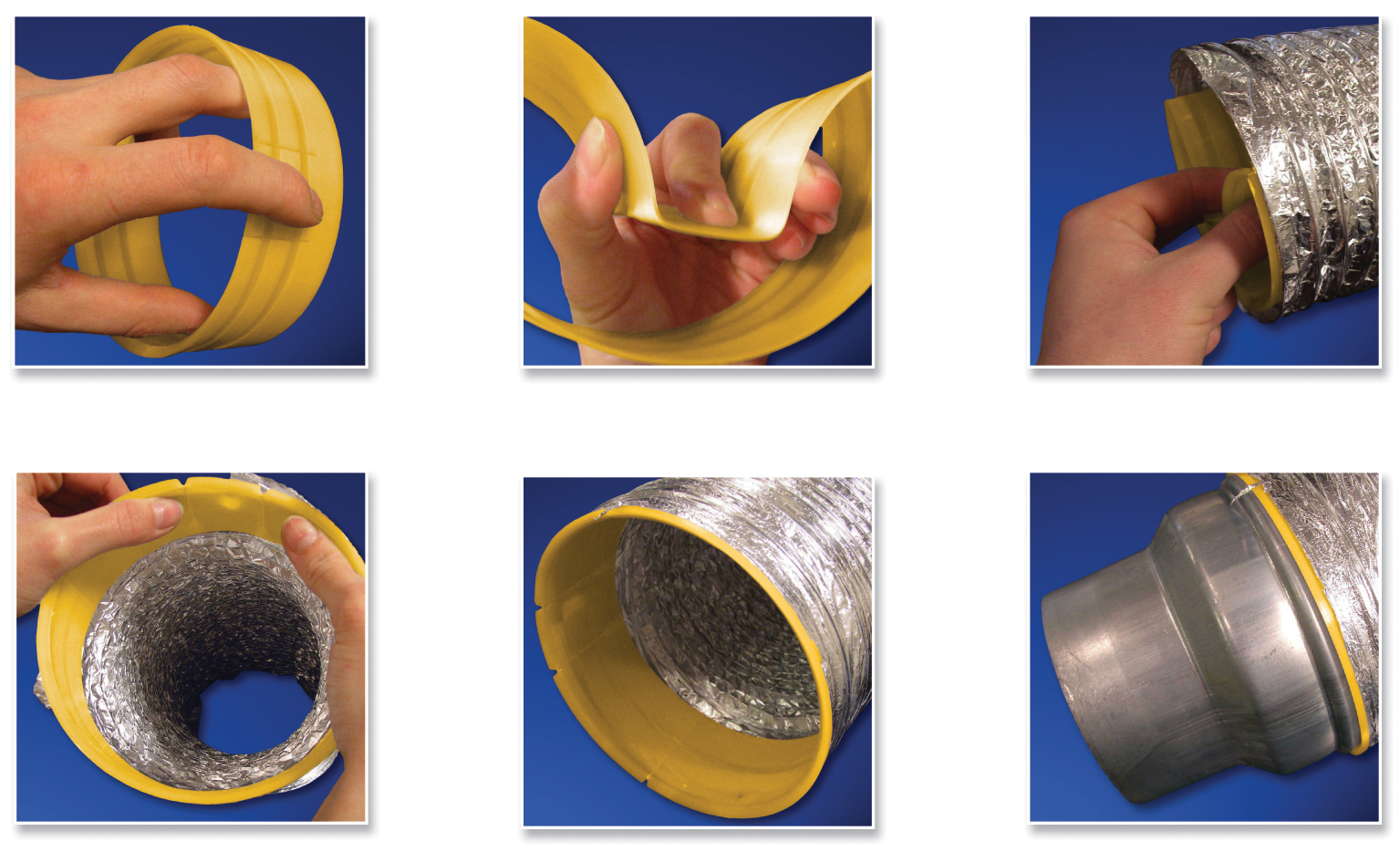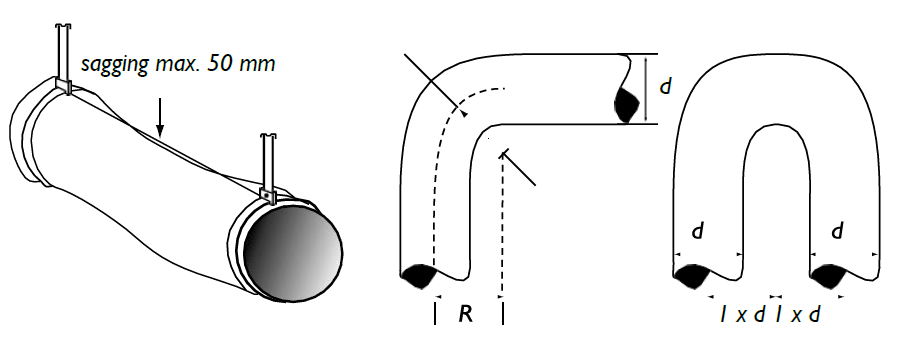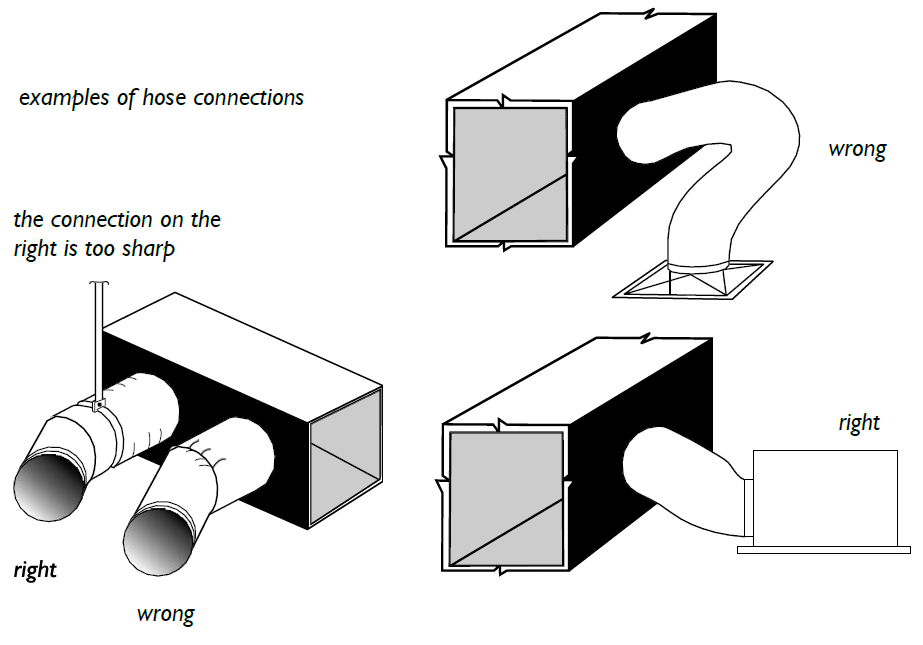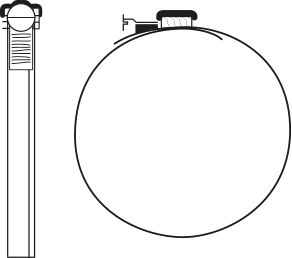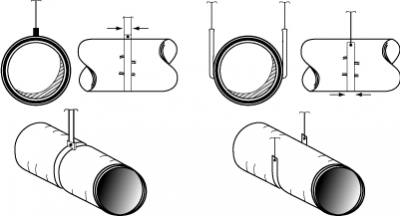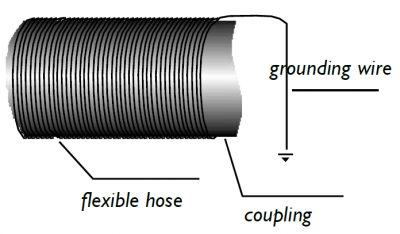Function
A flexible hose is used in an air transport system to connect a vent, valve or vent plenum to an air duct.
Material quality and thicknesses
For normal comfort ventilation, flexible hoses are manufactured from the following materials:
- Aluminium
Aluminium straps according to NEN-EN 573 are used for manufacturingaluminium flexible ducts. The thickness of the material depends on the typeof hose and on the supplier. The minimum band thickness is 0.095 mm; - Aluminium foil
The hose is composed of layers of aluminium and polyester foil oraluminium polyester laminate in which a spiral wire is incorporated. Thethickness of the material depends on the type of hose and on the supplier; - Plastic
The hose is manufactured from a fibre-reinforced synthetic cloth or from avinyl-coated fabric cloth incorporating a spiral wire. The thickness of thematerial depends on the type of hose and on the supplier.
The spiral wire is made of steel; concealed or non-concealed, if necessary with a coating. Hoses are available in three versions:
- uninsulated;
- thermally insulated;
- acoustically insulated.
Fire resistance
If required, the fire resistance must be specified in accordance with the fire classifications in the NEN-EN 13501-1.
Dimensions
The nominal sizes available for intermediate flexible hoses are standardized to NEN-EN 13180 and can be selected as shown in the table (see right). The dimensions depend on the manufacturer.
The flexible hoses are usually supplied in a compressed version. The hose must be stretched out before use. After stretching, the hose should be no more than 3% shorter than the nominal length specified by the supplier. The lengths available vary by manufacturer and are available from 1 to 10 metres when extended. When compressed, the lengths are 0.4 to 3 metres, depending on the type and manufacture of the hose. The aim should be to use a minimum of 0.5 to a maximum of 1.5 metres of hose. If a longer length has to be used, the hose must be properly clamped.
Cutting of uninsulated hoses:
- Stretch out the hose properly; an incomplete stretch leads to unnecessarypressure loss;
- Measure the correct length and mark this point with a felt-tip pen; never use more hose than absolutely necessary;
- Between the spiral windings, cut the material along its full circumference;
- Use a pair of cutters to cut the spiral of the hose;
- Cut away the excess spiral.
Cutting of insulated hoses:
- Stretch out the hose properly; an incomplete stretch leads to unnecessarypressure loss;
- Measure the correct length and mark this point with a felt-tip pen; never use more hose than absolutely necessary;
- Using a sharp knife, cut through the outer layer, insulating material andinner hose;
- Cut the hose along its full circumference and use a pair of cutters to remove the cut the spiral of the inner hose;
- Cut away the excess spiral;
- Using scissors, remove any excess insulation material.


